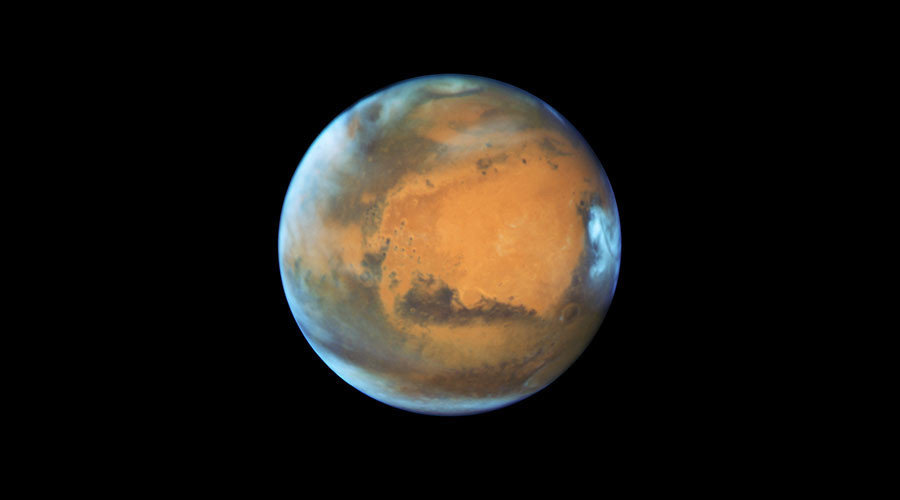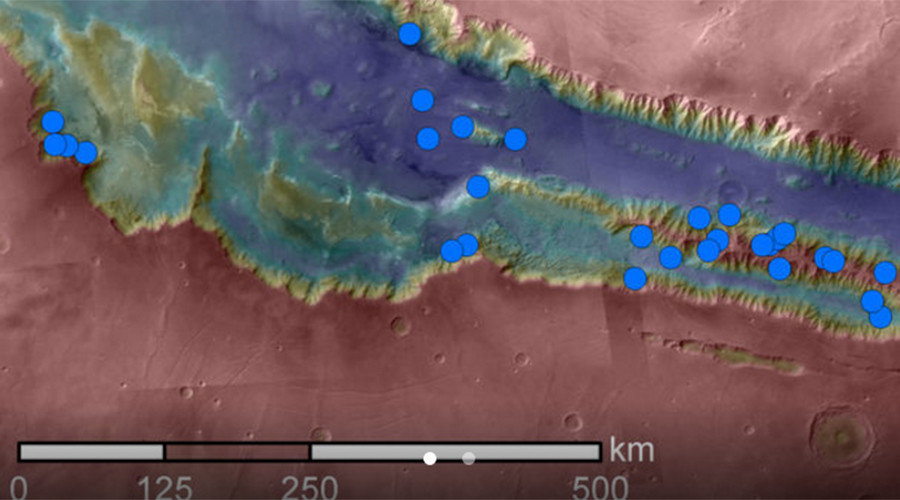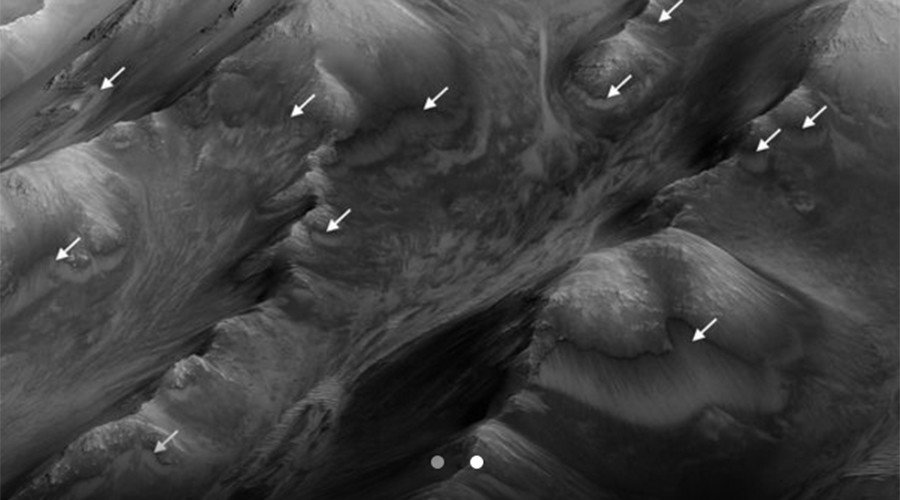
© NASA / Reuters
NASA has examined thousands of "dark streaks" on Mars which might have formed due to liquid water, ice or vapor. The results of the study
give "additional support for the notion that significant amounts of near-surface water can be found on Mars today."The agency
posted a series of photographs obtained from the Valles Marineris region near Mars' equator which depict numerous dark lines found around the planet's canyons.
According to the scientists, the mysterious streaks might be indications of the presence of either frozen or liquid water, or vapor.

© NASA
There are so many of them, it's hard to keep track," said Matthew Chojnacki of the University of Arizona's Lunar and Planetary Laboratory, Tucson, and lead author of the new report in the
Journal of Geophysical Research: Planets.
The study looked at thousands of lines known as recurring slope lineae, or RSL - a special term adopted by NASA scientists given that the do not yet know how the lines form.
"Collectively, results provide additional support for the notion that significant amounts of near-surface water can be found on Mars today and
suggest that a widespread mechanism, possibly related to the atmosphere, is recharging RSL sources," the scientists wrote in the press release.
According to NASA, the
streaks are much more "widespread than previously recognized"."...if they are indeed associated with contemporary aqueous activity, that makes this canyon system an even more interesting area than it is just from the spectacular geology alone," the scientists pointed out.

© NASA
Although the scientists did write in the press-release that the "dark streaks" "might be signs of liquid water", they are not sure how they appeared.
One of the theories is that the streaks formed due to an underground layer of water. At the same time the scientists say it is unlikely the water from an underground layer reached the surface of canyon ridges and isolated peaks where most of the streaks appear.While liquid water might be the reason for their formation, the researchers have not ruled out other hypotheses. One of them involves the interaction between salts and water vapor. According to scientists,
salts might have pulled water vapor from the Martian atmosphere creating "liquid brine"on the ground surface. The streaks might be left-overs of the salt which is left on the surface after the brine evaporates.
"There are problems with the mechanism of pulling water from the atmosphere, too," Chojnacki said admitting that questions about the streaks formation still remain.
If the theory is correct and the streaks did appear due to the salts' pulling of vapor than as many as 10 to 40 Olympic-size swimming pools would be required for the dark features to form, scientists explain. Although the whole Valles Marineris region seems to have a lot more water vapor than that, the scientists struggle to state a mechanism which would extract water from the atmosphere.
"There do seem to be more ways atmosphere and surface interact in the canyons than in blander topography, such as clouds trailing out of the canyons and low-lying haze in the canyons." he said. "Perhaps the atmosphere-surface interactions in this region are associated with the high abundance of recurring slope lineae. We can't rule that out, but a mechanism to make the connection is far from clear."
The scientists also do not rule out the fact that the streaks could have formed due to ice which could be present near Mars' surface.Last month NASA announced it was eager to use the
Curiosity Rover to investigate dark streaks and take close-up images of the sites of their abundance.
Comment: Further reading: